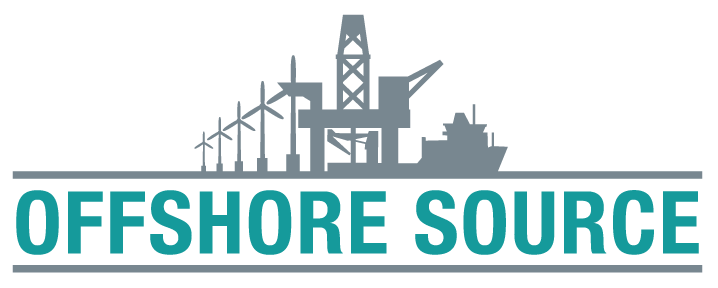Lerwick Port Authority have inaugurated a new Vessel Monitoring System (VMS) which utilizes the latest technology to improve the handling of ship movements at the busy Shetland port.
Transas, a world-leader in providing harmonized integrated solutions to the maritime industry, has installed the system across four sites covering the port area – port control in the main building and three remote stations, at Rova Head north of Lerwick and Maryfield and Kirkabister, on the island of Bressay, monitoring the northern approaches, inner harbor and southern approaches, respectively. Fibre and microwave links supply data back to port control.
 Lerwick Harbour’s port control room and the newly installed Vessel Monitoring System, with Deputy Harbourmaster Alexander Simpson (left) and Port Controller Douglas Garrick (right). Credit: John Coutts.
Lerwick Harbour’s port control room and the newly installed Vessel Monitoring System, with Deputy Harbourmaster Alexander Simpson (left) and Port Controller Douglas Garrick (right). Credit: John Coutts.
The completion is being marked today (Friday 19 August, 2016), with invitations extended to port users to view the new system.
The modernizing VMS project, including the Transas contract, telecommunications and civil works, cost £450,000.
The Port Authority’s Deputy Harbourmaster, Captain Alexander Simpson, said: “The VMS is already a great asset for Port Control in handling shipping movements and providing navigational assistance. It combines data from multiple sensors in very user-friendly vector chart operator display units, extends Port Control’s VHF radio range, displays weather information and linked cameras deliver CCTV coverage – all enhancing the efficiency and safety of operations.
“The investment in the VMS is just one of several projects expanding the port’s infrastructure at a time when we are welcoming larger vessels – for example, the biggest cruise ship yet at Lerwick arrived this week.”
The new VMS is based on the high-end Navi-Harbour software solution from Transas. Hardware equipment scope consists of Class A AIS Transponders, Northrop Grumman Sperry Marine Vision Master radars, a Jotron VHF Communication System, Gill Meteorological sensors, general IT hardware platform and an APC Power Backup System.
“The Transas Ship Traffic Control solutions installed at Lerwick Harbour will provide tools for coordinated approach to maritime traffic control, monitoring and decision support which is vital in the era of rapid digital transformation,” comments Frank Coles, Transas CEO.
As part of a wider project to refurbish the Authority’s office in Albert Building, the port control room in Albert Building has been completely renovated, including a new server room. Transas closely collaborated with the Authority to design a new layout for the service within the building and contracted local support from H Williamson & Sons for installation and ongoing maintenance.
As part of its comprehensive customer support program, Transas also provided the Authority with an Operator Training Course and Maintenance Service Plan.
Conversion of the ground floor of Albert Building to a new reception and offices is underway, for completion by year-end as part of the phased refurbishment program.
About Lerwick Harbour
Lerwick is “Britain’s Top Port”, the most northerly commercial harbour in the country, handling more than 10,000 vessel movements in-and-out of the port annually, plus numerous movements within the harbour, and servicing a range of industries, along with the Shetland community. It is a leading centre for the fishing sector; for the offshore oil and gas industry in the Northern North Sea and North-Eastern Atlantic; Shetland’s lifeline ferry port to the Scottish mainland and a popular-port-of-call for cruise ships. Lerwick is a Trust Port, with the Authority responsible for management, maintenance and regulation, with all profits reinvested in the harbour.
About Transas
Transas’ vision is to lead the way in creating an ecosystem of harmonised integrated solutions in safety, navigation and ship operations. In creating these solutions Transas unites global maritime stakeholders in the future of e-Navigation and operations.
True to its vision, Transas has introduced THESIS, the Transas Harmonized Eco System of Integrated Solutions. THESIS is a flexible data resource where Ship, Fleet Operations, Academy (simulation & training) and Ship Traffic Control can all be connected to the ecosystem, effectively a community working together on a cloud based shared data platform to enable smarter operations, safety and navigation. United into a single environment, navigation, simulation, vessel traffic, and fleet management systems become a decision support tool using the data provided by Transas software solutions. Transas operates more than 20 own regional offices and has a global network of partners around the world.


 Image courtesy: Kongsberg Maritime
Image courtesy: Kongsberg Maritime The GLOBAL PROVIDER, Maxum Petroleum's newest vessel is currently under construction at Jesse Co. in Tacoma, Washington and expected to enter service in January 2017.
The GLOBAL PROVIDER, Maxum Petroleum's newest vessel is currently under construction at Jesse Co. in Tacoma, Washington and expected to enter service in January 2017. The international science community’s newest ocean research platform, a deep-rated remotely operated vehicle (ROV) called SuBastian, will be positioned and navigated using acoustic and inertial technologies supplied by Sonardyne Inc., based in Houston.
The international science community’s newest ocean research platform, a deep-rated remotely operated vehicle (ROV) called SuBastian, will be positioned and navigated using acoustic and inertial technologies supplied by Sonardyne Inc., based in Houston. Specialist aluminium boatbuilder,
Specialist aluminium boatbuilder,  Norway-based boat system and davit-handling specialist
Norway-based boat system and davit-handling specialist  Damen Shipyards Sharjah
Damen Shipyards Sharjah Lerwick Harbour’s port control room and the newly installed Vessel Monitoring System, with Deputy Harbourmaster Alexander Simpson (left) and Port Controller Douglas Garrick (right). Credit: John Coutts.
Lerwick Harbour’s port control room and the newly installed Vessel Monitoring System, with Deputy Harbourmaster Alexander Simpson (left) and Port Controller Douglas Garrick (right). Credit: John Coutts. Juha Koskela, Managing Director, ABB Marine and Ports
Juha Koskela, Managing Director, ABB Marine and Ports Photo credit: Damen Trading
Photo credit: Damen Trading Skandi Açu: Photo credit: DOF Subsea
Skandi Açu: Photo credit: DOF Subsea Allseas’ dynamically positioned single-lift installation/decommissioning and pipelay vessel “Pioneering Spirit” successfully executed her maiden heavy lift project, removal of the 13,500 t Yme mobile offshore production unit (MOPU) in the North Sea, 100 km off the coast of Norway, on 22 August 2016 for Repsol Norge AS.
Allseas’ dynamically positioned single-lift installation/decommissioning and pipelay vessel “Pioneering Spirit” successfully executed her maiden heavy lift project, removal of the 13,500 t Yme mobile offshore production unit (MOPU) in the North Sea, 100 km off the coast of Norway, on 22 August 2016 for Repsol Norge AS. Photo courtesy: Damen Shipyards
Photo courtesy: Damen Shipyards Kongsberg Maritime’s energy, handling and operational technology solutions are to be further combined in complete vessel concepts under a new ‘Integration’ strategy introduced at ONS 2016. KONGSBERG is creating a new integrated platform to enable solutions that network seamlessly to provide tangible benefits with efficient operations on vessels and ashore.
Kongsberg Maritime’s energy, handling and operational technology solutions are to be further combined in complete vessel concepts under a new ‘Integration’ strategy introduced at ONS 2016. KONGSBERG is creating a new integrated platform to enable solutions that network seamlessly to provide tangible benefits with efficient operations on vessels and ashore.
 The U.S. Coast Guard has certified
The U.S. Coast Guard has certified  Inmarsat
Inmarsat